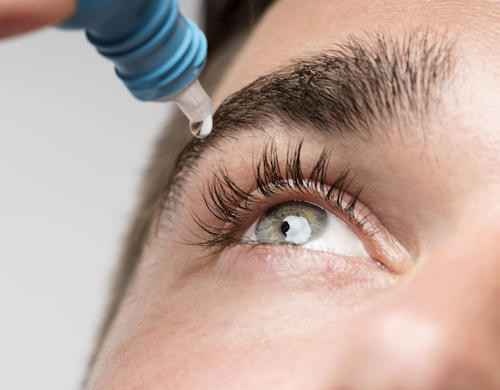
What is Dry Eye Syndrome?
Dry eye syndrome is a condition caused by a decrease in tear production or excessive evaporation of existing tears. It is a eye health problem that occurs when the eye surface is not adequately moisturized or when tears are not of sufficient quality.Tears moisturize, protect, and nourish the eye surface. Dry eye syndrome occurs when these functions are not fulfilled, leading to discomfort in the eyes. Studies have reported its occurrence in adults between 8% and 20%.
Increasing discomfort as the day progresses, a sensation of burning, foreign body sensation in the eyes are the most common symptoms. Some patients may also experience redness, pain, a sensation of pulling in the eyes, and pressure behind the eyes.
What are the causes of Dry Eye Syndrome?
Normally, the tear layer on our eyes is renewed with every blink. Therefore, behaviors that reduce the frequency of blinking, such as working on a computer, reading, driving, and watching TV without blinking, can exacerbate symptoms. Extreme heat, cold, and wind also exacerbate symptoms.A decrease in tear production with age is an expected change in normal individuals. In women, menopause and hormonal changes increase the incidence of dry eye syndrome in their fifties.
In addition, many rheumatic diseases (Rheumatoid Arthritis, SLE, Sjögren's syndrome) significantly reduce tear production.
Another cause of dry eyes is medication use. Antidepressants, birth control pills, certain hypertension medications, and allergy medications (antihistamines) are the most well-known medications that cause dry eyes.
In addition to these, vitamin A deficiency, contact lens use, eyelid edge abnormalities, and inflammation of the eyelash follicles can also cause dry eyes.
How is Dry Eye Syndrome diagnosed?
Dry eye syndrome can sometimes be detected with a simple examination using a slit lamp microscope. In suspected cases, Schirmer Test, BUT test (tear break-up time), and Meibography tests are helpful in diagnosis.How is Dry Eye Syndrome treated?
The treatment of dry eye syndrome varies depending on the underlying causes and the severity of symptoms.The first option in treatment is to advise the patient to avoid environments and activities that exacerbate their discomfort.
Eye drops used as medication serve two purposes. These are to replace deficient tears or to increase tear production. Artificial tears can be used in drop or gel form to replenish deficiencies. Medications containing the active ingredient cyclosporine are thought to increase tear production in the long term.
In cases related to contact lens use, it may be necessary to review or change the lenses. Additionally, using humidifying devices to moisturize the environment and protect the eyes can be beneficial.
The treatment plan is determined by an eye doctor and tailored to the individual's specific needs.
In a small number of patients, another preferred option is punctal occlusion, which blocks tear drainage into the nasal cavity and mechanically plugs the tear duct.
Heating and/or massaging the eyelids are also effective methods. Treatments with devices such as IPL / Eye Light are applied for this purpose.




